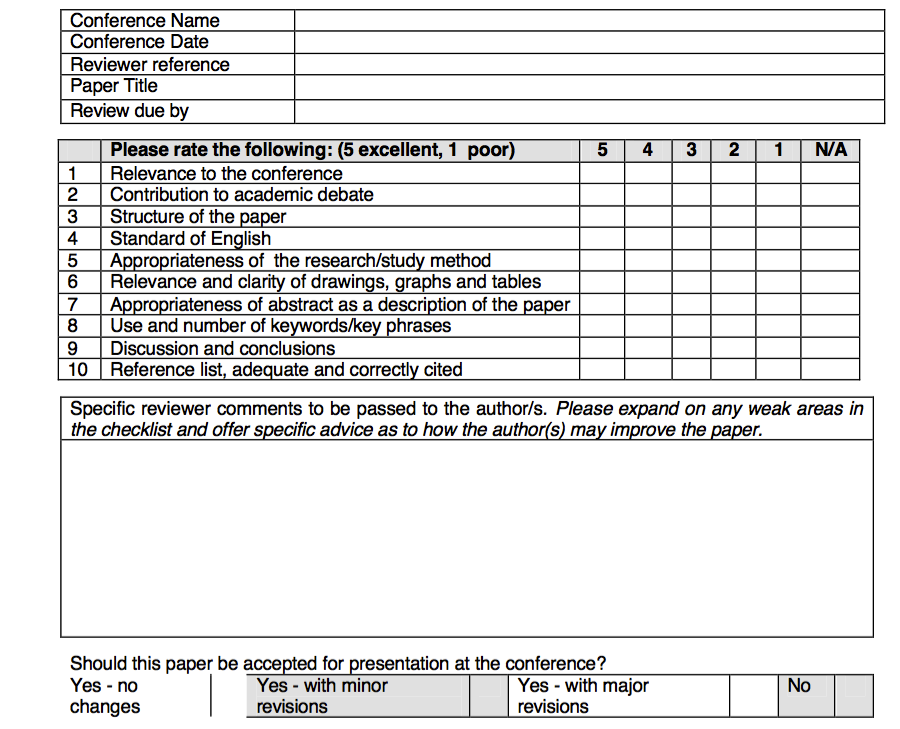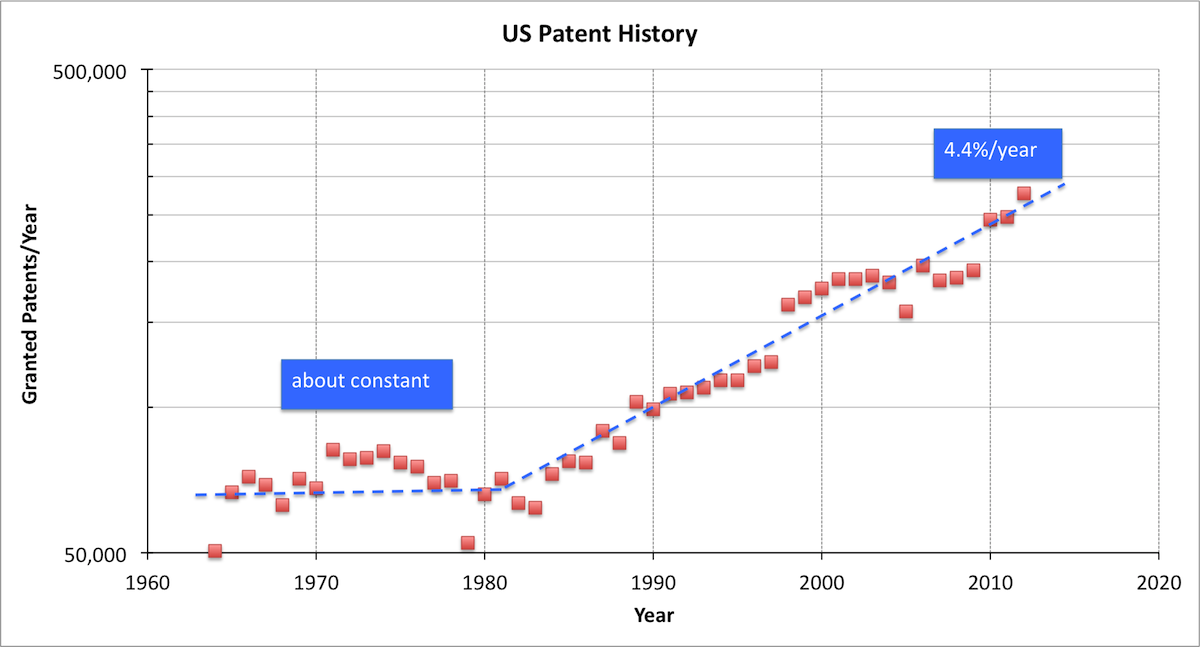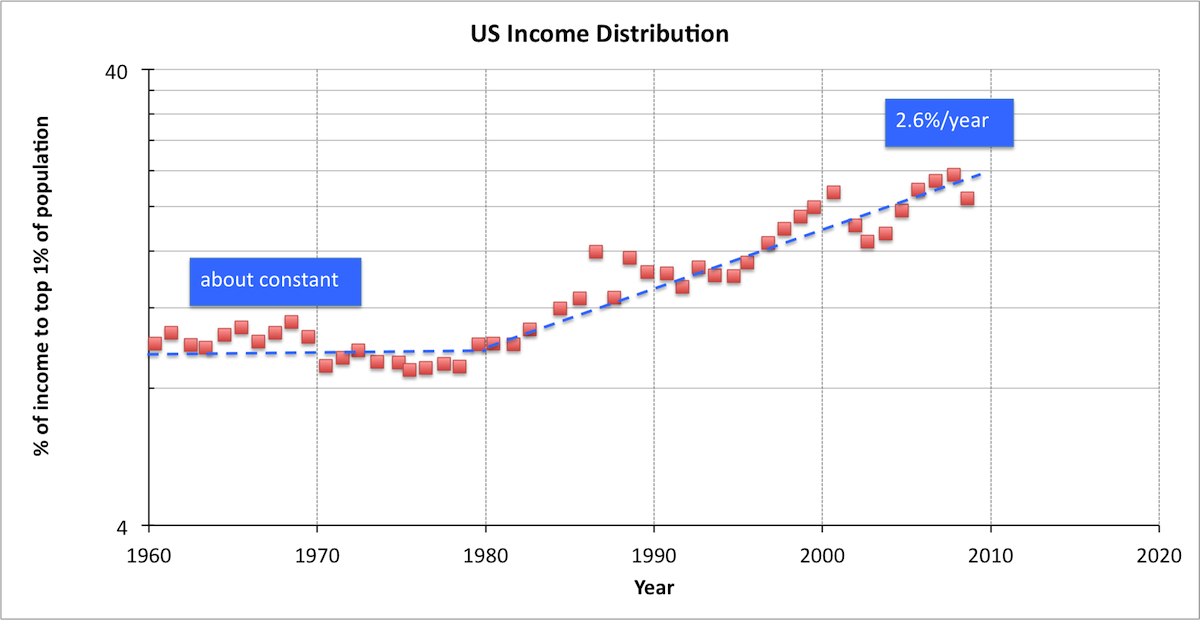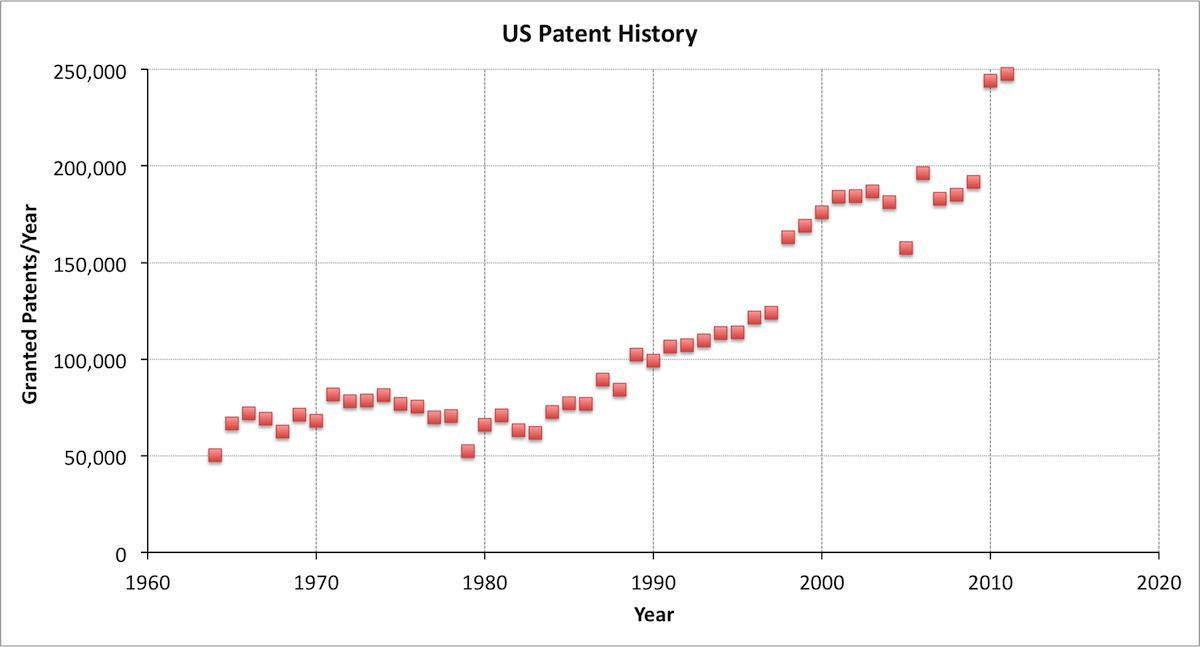|
current posts | more recent posts Non-obviousness and enablement are the two complementary aspects of the idea that a patent has social value: without the patent a person of ordinary skill cannot practice an invention, but with the patent they can. But how do we know if and when this is true?
The answer is rather disheartening. Non-obviousness is tested by how an examiner feels about claims. We noted in the previous post that this is a strange and short-sighted way to think about an invention, but what's worse is that the when real world provides us a falsification of the examiner's decision, it is treated as a crime. When a patent has been granted, and then another person discovers and practices the claimed invention, they can be sued for infringement, even if they can demonstrate that they had no knowledge of the patent and no other means of deriving their result from its inventors. Upon first glance this is a rather bizarre result, since the fact that another person has discovered the invention unaided means that the first part of the patent compact has been shown to be inapplicable: the patent was not needed to practice the invention. The invention was obvious, the examiner got it wrong, and the patent is invalid. But that's not the way the law works. So not only do we not test the belief in non-obviousness during examination, we willfully ignore subsequent evidence that the examination was incorrect. [1]
Enablement is worse. It plays no role in examination and usually also in litigation. The America Invents act has even abandoned the requirement that the best mode of practice known to the inventor be disclosed, since lack of such disclosure no longer has any effect on validity. This is a puzzling result for an engineer (like me) who actually makes things, because we know from long and painful experience that there are lots of good ideas but very few that actually work the way you think they will. Attorneys and judges basically assume that everything is ok when enough text has been recorded, even if the text is gibberish. This is because they never have to ship product.
There's no reason for this situation, other than the legal profession's aversion to empirical data. For a brief period in the 19th century, inventors were required to provide a working model with their application. The practice was terminated because the patent office ran out of room for all the stuff, not because it was a bad idea. A patent applicant is asking for a monopoly. We don't have to give it to them. The burden should be on them to PROVE by empirical testing that they have satisfied the two complementary requirements for receiving their right to exclude.
This isn't that hard to envision. The European Patent Office presents the following standard for judging inventiveness:
"Is there any teaching in the prior art, as a whole, that would, not simply could, have prompted the skilled person, faced with the objective technical problem formulated when considering the technical features not disclosed by the closest prior art, to modify or adapt said closest prior art while taking account of that teaching [the teaching of the prior art, not just the teaching of the closest prior art], thereby arriving at something falling within the terms of the claims, and thus achieving what the invention achieves?"
So all we have to do is validate the "would, not could" standard by getting some folks together, giving them the problem, and seeing what they do in fact come up with -- and then handing them the patent and seeing if it makes a difference. In the next post we'll present some more details about how to do this, why we ought to, and where to use the resulting knowledge.
NOTES
1: A "prior rights" defense is now allowed in the US when the invention in question has been in use by the accused infringer prior to the filing of the accusing patent. The user retains the right to use the invention, but the patent is still not invalidated, even though it was shown to be so obvious that someone invented it before the person who filed.
[Posted at 10/19/2014 01:10 PM by Daniel Dobkin on Patents  comments(0)] comments(0)] 
Oooops, conceptual typo.

Aaaack, blew it again.
Third time's the charm:

There. Dull but relevant.
Peer review is the process of grabbing people who are familiar with a field to look at a paper or book before it gets published. It has been used in various forms for a long time in the sciences; Wikipedia provides a nifty history of the process. While 19th-century reviewers were often journal editors or staff, in the twentieth century reviewers were generally folks who had themselves published papers related to the one under consideration, the reviewers being recruited by journal editors. In the modern crowd-sourced world, journals are experimenting with open reviews, in which an article is published and then reviewed by whoever is interested, with the reviewers' comments becoming part of the publication.
A limited form of peer review, known as the Peer-to-Patent project, has already been tried by the US Patent Office. A first version ran in 2008, and a revised project ran from October 2010 to September 2011. Both were administered in cooperation with the New York Law School, and were limited to certain areas of art, including software-related patents, and later biotechnology, and speech recognition. Patents submitted to the program got earlier review as a reward. Smaller related projects have also been run in Australia and Japan. Most importantly, the reviewers were limited to submitting prior art they thought was related to the patent, and optionally annotating the art to help an examiner.
NYLS published a couple of anniversary reports (Peer to Patent home page). The program was also evaluated in some detail by students James Loiselle, Michael Lynch, and Michael Sherrerd at Worcester Polytechnic Institute ("Evaluation of the Peer to Patent Pilot Program"). While various administrative problems were encountered, even this limited program clearly contributed to the ability of examiners to access relevant prior art. At the very least, Peer-to-Patent ought to be revived and extended to all areas of art.
However, the process as it has so far been tried treats the public as servants assisting examiners but exercising no judgment. Peer review in the sciences may leave the final decision to an editor, but encourages reviewers to be full participants in the intellectual endeavor of evaluating the submitted work. As we described in the previous post, it is the focus on comparing claims to one or two prior publications, rather than actually reading and comprehending the specification, that gives rise to many of the absurd results we see from the patent system. In order to make peer review contribute fully to the patent process, we need to realize that people skilled in the relevant art are not just a theoretical legal construct but a reality, and ensure that they contribute (hopefully thoughtfully) to the process of examination. We therefore propose the following elaborated peer review process.
Every patent application should be subject to obligatory peer review to supplement the existing examination. The pool of reviewers may be administered by the USPTO, or administered by professional organizations relevant to specific arts (such as the IEEE for electrical and computer engineering) as representatives of the USPTO. To ensure an adequate pool of qualified reviewers, the USPTO should require that a person cannot file a patent application unless they have also registered to act as a reviewer. (This particular provision, at least, is likely to require legislation. I never said reform was easy.) An alternative, more stringent condition, would be that any would-be applicant must have performed at least (for example) three reviews of other people's applications in the previous year. The status of international applicants may be arranged through suitable agreements, such that they can fulfill the same duties as US citizens, while subject to the laws of their country of residence.
The reviewer should be bound to examine the specification and provide their best objective evaluation of:
• NOVELTY: whether a novel invention is described;
• ENABLEMENT: whether the invention is described in sufficient detail to allow them (or anyone else of ordinary skill) to practice the invention without undue experimentation;
• UTILITY: whether the described invention is useful to practitioners of the relevant art.
Reviewers may optionally express an opinion regarding claims submitted in the application. The examination process, as we have noted, already puts way too much emphasis on partitioning ownership; there's no need to add more.
It is an interesting question how reviewers for a specific application should be selected, since a reviewer ought to be conversant in the field of interest for the application. Since would-be applicants would be required to register as reviewers, it is possible to also require that they state the fields in which they are knowledgeable, and then have applications recommended by an examiner. The examiner may also look at past filings, or technical publications, by a reviewer to see what areas they work in. These approaches are analogous to peer reviewers selected by journal editors based on past publications. Self-selection is an alternative in the modern internet-based world, but might be usefully accompanied by a brief statement of why a reviewer is qualified to review a specific application, or perhaps a resumé.
Reviewers may cite prior art that they believe to be relevant, just as in the Peer-to-Patent program. As noted in the program evaluation, it is also important that they annotate the cited art to clarify what the examiner might want to look at.
Each review becomes a part of the file wrapper for the application. (That's the official record of the prosecution of a specific patent, and becomes publicly available after publication.) There is no requirement that an examiner take the reviews into account, except that s/he should look at any additional cited art. However, in the event of litigation related to a granted patent from the application, the unedited reviews must be entered as evidence and made available to the jury. Reviewers may be called but shall not be obligated to testify, except to provide an affadavit ensuring that the cited reviews were in fact produced by them.
Note the fact that an applicant MUST be a reviewer addresses the issue of ensuring that patents are indeed reviewed, a concern in the earlier projects. The requirement of review as a precondition for filing also addresses any reticence an employer might have in allowing an employee to review; if they want to file, they have to allow their employees to review.
Disclosure of a patented invention is the price of monopoly. The strange idea that an application should be secret should never have arisen and should be abandoned in any case; it should not be an obstacle to review. Review by people who know what they are reading will help ensure that the invention is actually comprehensively and comprehensibly disclosed. It will help reduce the tendency of applicants to intentionally file before they know how to enable an invention, thus avoiding effective disclosure while securing monopoly rights.
The question of anonymity of reviewers, and of applicants, is a continual challenge and a subject of experimentation in the sciences; there is no reason we should expect the best answer to be immediately apparent for a patent review system. However, in the case of patents, I suggest that there are strong arguments for disclosure and attendant responsibilities. In order to qualify to hold monopolies, a would-be applicant must review. In order to ensure that he or she does so responsibly, they should NOT be anonymous. Disclosure also makes it possible to review qualifications and expose conflicts of interest that might taint their review.
I have proposed that reviewers are not exposed to testimony in litigation, except to confirm that the review in question was in fact produced by them and has not been tampered with, but a good case could be made that reviewers should provide testimony in litigation (presumably being compensated in doing so just as any hired experts are). I can assure the readers, from personal experience, that testifying in civil litigation sucks, at least for people with ethical standards. If this makes people reluctant to review patents, it will then reduce the number of people who can file, which -- if patents are unhelpful to the overall economy, as we previously showed -- could be a good thing.
BENEFITS AND CHALLENGES:
The great benefit of requiring a record of critical reviews is that, when litigation occurs, a possibly objective examination of the virtues of the patent or patents in use will exist -- something that doesn't happen otherwise. Incomprehensible specifications, specs that don't describe anything useful, or merely contain all the things that any skilled person would try, will be described as such by someone who (we hope) doesn't have a direct interest in the litigation. Ideas that are actually new and important will also get the benefit of such characterization. Peer review, properly conducted, will help create a background understanding of whether something new and useful was usefully disclosed, against which the arguments about what is owned and what is not can take place.
The program as proposed will create a professional obligation for people who wish to be able to file patent applications. There's nothing bad about tying privileges to obligations. If it is administered by professional societies, those societies will benefit, and thus become supporters of the program. If it administered by the USPTO, it will need to be funded, always a challenge.
Naturally, as with any system, people will try to cheat and manipulate the results. Peer review in the sciences has encountered many challenges and has experienced some spectacular failures. We can't expect this to be any easier.
While some of what is outlined above can be accomplished by the USPTO (or equivalent organizations) on their own authority, requirements limiting the ability to file will certainly require legislation, obviously a major challenge in the modern world. International filers will also need to be treated fairly, requiring revisions to existing international agreements, again time-consuming and laborious.
And that's the easy proposal. But if you don't start, you can't finish. More to come.
[Posted at 10/12/2014 03:51 PM by Daniel Dobkin on Patents  comments(0)] comments(0)] I've been working on and off on patents for about twenty years, though I am neither an attorney nor a patent agent. When I make one of my colleagues review a patent (which is for most of them the only time they read patents), a very common reaction is "How the heck did they get that?" OK, the word used is often more profane than ‘heck' - but the sentiment is the same: "Everyone who works in the field knows ‘x'; why was a patent granted on it?"
This anecdotal evidence is supported by recent more-thorough examinations, some described by Matt Levy of Patent Progress. Michael Risch of Villanova recently published a study showing that of 105 patents whose validity was examined in litigation, 44 were completely invalidated, and only 32 were found to have all valid claims (A Generation of Patent Litigation..", page 38) . Dennis Crouch of the University of Missouri has estimated the allowance rate for applications (when "Requests for Continuing Examination" are included) as about 70% (USPTO Breaks New Ground...) - that is, pretty much everybody who applies gets a patent, though sometimes it takes a while.
Are we to conclude, as Mr. Aharonian of the Internet Patent News email service often seems to advocate, that patent examiners are idiots and the USPTO is run by slimeballs? While the unfortunate limitations of human nature may play a role in the failings of the patent system, in this post we will suggest that the nature of patent prosecution inevitably leads to the often-silly and sometimes harmful results we observe. This brief discussion will then serve as motivation for the changes in the system we will examine in subsequent missives.
A patent consists of an abstract, a specification, drawings, and claims. But when a patent is examined, it is often the case that only the claims play a significant role. (An attorney colleague of mine believes that most examiners don't read anything but the claims, and the specification might as well be skipped.) This is curious, because, as noted by Professor Feldman of UC Berkeley in Rethinking Patent Law*, no one knows what the claims of a patent actually mean until it is litigated.
The claims are supposed to clearly describe what the applicant "claims" to have invented and therefore owns. Claims are usually fairly brief - a quarter of a page or less, often much less - and have a few "elements" which are supposed to describe an invention. An examiner responds to an application by citing one or more pieces of "prior art" (stuff that was published before the application was filed) that he or she alleges contain the purported inventive elements. It is often the case that only one bit of prior art is used; it is rare for more than four or five references to be cited. The applicant then argues that the prior art is not, in fact, relevant, and may also amend the language used in the claims to narrow their scope - although, as noted above, it's never clear what the practical effect is until you're in court.
The cited prior art essentially consists only of patents and patent applications, unless the applicant has provided publications from other sources. Sometimes the cited prior art just flat out has what the applicant thought of. One would think this should result in immediate abandonment of the application - but in fact, many applicants simply find a way to narrow the claims until something gets granted. Sometimes the cited prior art is so bizarrely irrelevant (at least to a person knowledgeable in the field) that one can only assume it is the product of a keyword search with no intelligence applied. But in general we can treat the cited prior art as roughly being taken at random from generally related earlier patents, in the sense that most topics have hundreds or thousands of applications and granted patents, and no one would have the ability or time to read and absorb a substantial fraction of them. And that leaves out all the technical literature and commercial product information that ought to be included but just isn't.
We can thus consider what happens if you randomly sample a complex object. If you actually design something, your code, or chip, or medical device, is unique. It always has a slightly different set of tradeoffs, guesses, wants, and compromises from other examples of similar stuff. So in the sense of not being identical to any single publication or object, every application is inventive, and that's what we see: most applications become granted patents. The applicant can always find a way to claim their stuff that's not quite the same as whatever art was cited against them. This might be ok if the system we used was primarily oriented to preventing exact copies of the patented object, but that's not how our existing system works. (In a future post we will examine some thoughts on how to usefully move towards such an approach to defining what is excluded by a patent right.)
What does not happen is what a practitioner in the field does with a technical publication: read the specification to figure out what the application thinks it has that is new, and then reflect upon the art to figure out if it is, independently of what the applicant thinks they'd like to own. The way the world should be is: If there is no invention in the specification, there can't be an invention in the claims. But that's not how the world actually works.
In summary, patent examination is mainly an exercise in the wordsmithing of claims, not a reflection on the novelty, clarity, and utility (or lack thereof) of a purported invention. It is this fact that explains why the results are often silly and sometimes absurd.
People are people and don't readily modify their behavior, at least once they get old enough to hold a job. What can we do to modify the system to make it work better with the people we have? In the next few posts I'll propose a number of approaches, some old, some perhaps new, to accomplish this end.
*Full disclosure: Professor Feldman's book, as I've noted in a review on Amazon, isn't really very good, at least for anyone who is not a law professor. But she does seem to know the legal side of the system quite well, so I am accepting her view on the issue of claims interpretation.
[Posted at 10/04/2014 01:22 PM by Daniel Dobkin on Patents (General)  comments(0)] comments(0)] In the previous post, we saw that the dramatic increase in patent awards since about 1980 has not been accompanied by any consequent change in overall economic growth in the United States. But before we conclude that patents don't do anything at all (except employ examiners and attorneys), let's look a bit farther afield.
For convenience, we repeat below the diagram shown in the previous post, of annual patent grants for the last half-century plotted on a logarithmic scale.

In the next graph, using data from Thomas Piketty's remarkable work Capital in the 21st Century, we plot the percentage of US national income collected by the top 1% of earners for about the same time period:

We can immediately see that, just like the number of patent grants, the share of income going to the top centile was about constant (or perhaps falling a bit) in the period 1960 to 1980, and then some time between 1980 and 1983 started going up dramatically. While there's a lot of scatter, we can make a plausible approximation that the share grows at about 2.6%/year from 1980 to 2010. This isn't exactly the same as the rate of growth of patent grants, but it isn't that different. Certainly the qualitative behavior of the two datasets is extremely similar. It's not easy to say if one is delayed with respect to the other, so the relationship might be causal, or it might be that both are the result of a single common cause. (Or, of course, the correlation could be accidental.) But in any case, this dataset looks a lot more like something related to patenting than the US GDP did.
Now, folks who have studied these issues (such as Prof. Piketty) would point at changes in tax law and corporate culture long before looking at intellectual property issues, when searching for the reasons behind the increase in wealth concentration in recent decades. And quantitatively they are probably correct. If we value each patent granted at $50,000, then the total value of a year's patenting is around twelve billion dollars. Even if that's pessimistic by a factor of 3 or 4, it's still a rather tiny fraction of the US GDP of around fifteen trillion dollars today. It seems reasonable that we should regard the close resemblance of our two graphs as showing that the behavior of both datasets is driven by a common cause, which we might characterize as the increasing influence of established wealth in governmental policy over the last 3 decades.
Nevertheless, we will suggest by the following argument that the result we see is consistent with a sensible understanding of what granting lots of patents might be expected to produce. A patent is a right to exclude: it gives the holder the legal right to prevent other people or organizations from doing something that, absent the patent, they have the ability and resources to accomplish. (You can't sue someone for infringement unless they are able to infringe.) About 90% of granted patents are owned by corporations, in the majority of cases due to compulsory assignment as a condition of employment. This percentage, incidentally, was only 71% in 1991.
The possession of these rights would be expected to have two consequences. The first is that the relative value of an employee relative to an employer is reduced: the employer now owns something the employee knows how to do. The employee can make improvements on an invention, possibly for a different employer, and patent same - but if the practice is still covered by the first grant, the initial employer can exclude the inventor from their own invention.
The second consequence is that established firms can raise barriers to entry by owning large numbers of patents. Barriers to entry increase profitability by reducing the number of competitors in a space without the need for product improvements. As noted, for example, by Boldrin and Levine in Against Intellectual Monopoly, patenting tends to increase as industries mature. Exclusion of competitors without corresponding improvements in products or services represents a net transfer of wealth to corporate management and investors over consumers. If patents were granted only for substantial improvements in products or services, and thus their disclosure represented a public good, it is possible that this transfer might be mitigated by the benefit to the public. However, US patents are in fact granted more or less at random, with little distinction between meaningless and profound disclosures. (We will discuss this assertion in more detail in the next post; a similar point is made in a recent post from the folks at Patent Progress: Why We Need Better Patent Quality.) It is unlikely that the resulting public benefit would outweigh the cost of granted rights to exclude.
And, of course, the third consequence of granting rights to exclude is the rise of non-practicing entities, patent "trolls", whose activities involve no products at all, but simply the threat of exclusion of other parties as a means of extorting payment.
Thus, it is plausible, though hardly proven, that the increase in US patenting has played a role in the roughly contemporaneous increase in the concentration of wealth in the United States. Research work in the islands of the Aegean sea over 2300 years ago, reported in Will Durant's The Life of Greece [1], showed that a substantial middle class is required for the success of a democratic system of government. While many other changes in policy are needed to moderate and perhaps reverse the progress of the United States towards a plutocracy, improvements in the means of granting patent monopolies can play a role. Suggestions for such improvements - some modest, some wildly ambitious - will constitute the topics of the remainder of this series of posts.
Sources:
USPTO; Capital in the 21st Century, T. Piketty (trans. A. Goldhammer), figure 8.6; http://www.nsf.gov/statistics/seind93/chap6/doc/6e1a93.htm; http://www.nytimes.com/2014/04/14/opinion/my-ideas-my-bosss-property.html;
Notes:
1: OK, I'm doing this one from memory; my copy is buried in the garage, don't ask. If someone has a digitized version of the book and can provide the specific citation (and any corrections to my instant characterization) I'd appreciate the help.
[Posted at 09/28/2014 10:13 AM by Daniel Dobkin on IP and Economics  comments(0)] comments(0)] Patents and Economic Growth: A Beautiful Experiment
Any time someone proposes changes in the patent system, they can expect to encounter platitudes about how important the protection of "intellectual property" (a term invented in the 1970's) is to innovation and prosperity. Just about everyone involved in the system seems to accept the notion that patents are important in promoting technological progress and thus economic growth. For example, in testimony to the US Congress last year, former USPTO director David Kappos, referring to patent reforms, said "…we are reworking the greatest innovation engine the world has ever known." But people believe a lot of things that aren't true. Is this one of them?
It turns out that, courtesy mostly of the Federal courts with just a bit of help from Congress, the United States has performed a lovely experiment in the last five decades that conclusively demonstrates that patents do not play a role in promoting the overall economy. Let's take a look.
The figure below shows the number of patents granted per year, from the early 1960's until last year.

We can immediately see that the number of patents granted per year was about constant for quite a long time, from roughly 1962 to 1982, but then increased dramatically (and is still going up). By the end of the period, about four times as many patents were being granted per year as at the beginning. If patents are important for economic growth, we would expect to see some sort of secular increase in growth corresponding to this massive change in patenting. And on the contrary, if patents are detrimental to growth, we'd expect to see growth decrease starting around the 1980's. Naturally, we wouldn't be surprised if the response to this change was delayed a bit, as the effects of patent grants might take a while to percolate through the system. However, the changes can't be delayed by more than the 17- or 20-year term of a patent, and it's been more than 20 years since the changes started. This is as nice an experiment as you get to do in the social sciences, so whatever result we get has to be considered as authoritative.
In the next graph, we show the United States gross domestic product, corrected for inflation into 2009 dollars, as red dots. The blue line is a very simple model for the data, which assumes a constant annual growth of 3.42% per year.

You can see that the blue line fits the measured data very precisely until 2007: that is, the US economy grew at a very constant 3.4% annual rate from 1963 to 2007. For those who enjoy statistics, the correlation coefficient between the measured data and this simple model, excluding 2007 through 2013, is 99.8%. That's pretty danged good even for the physical sciences. There is no evidence whatsoever for a sustained increase in growth some time after 1982, which would correspond to the hypothesis that patents benefit innovation and growth.
The data is even clearer when presented on a logarithmic scale. Logarithms are the numbers to which a base, such as 10, must be raised to produce a value. Thus, the logarithm of 10 is 1, the logarithm of 100 is 2, and so on. Logarithms have many virtues and are widely used in data analysis; see for example
Wikipedia:Logarithmic Scale
In this context, a constant growth rate becomes a straight line on a logarithmic plot. In the next graph, we can easily see that patenting growth has been a roughly constant 4.4% per year after about 1980.

The final image shows US GDP again plotted logarithmically.

It's readily apparent that the GDP data lies almost perfectly on the straight line of constant 3.4% annual growth, until the Great Recession. (And it's scarily clear that the slope of the line is now lower than it has been in the past five decades.) It's even easier to see that there is no correlation between patenting and GDP. We could double the system again, or get rid of it altogether, and expect no significant effect on overall prosperity in the United States. US patents do not play a measurable role in overall economic growth.
Now, it's worth noting that there is an abrupt decrease in GDP in the Great Recession of 2007, followed by what appears to be a secular decrease in sustained economic growth thereafter, to about 2.3% per year. It's hard even for the most dedicated opponent of the patent system to blame a sudden event in 2007 on a trend starting in 1981. But one could also argue that the sudden deflection in 2007-2008 must not be real, but must reflect a discrepancy between "real" economic growth and recorded GDP, so that growth may have slowed substantially earlier than shown. A possible version of this idea is depicted by the dotted green line, which illustrates the hypothesis that growth slowed to 2.3% per year around 1998, but the change was not observed by the means used to measure GDP until 2007. If we were to accept this hypothesis as real, we see the change in growth started in the late 90's, about 15 years after the change in the patent system - at the outer edge of plausible time delays. Even if US economic growth slowed a while ago, it's hard to claim the event was correlated with a change in the patent system occurring much earlier. We can't really assert that patents hurt the US economy, only that they don't help it. In the next post we'll establish a more dramatic correlation demonstrating the real effects of patent monopolies.
It's not impossible that this absence of utility is a consequence of the specific system we have used in the United States for the last few decades, and that another "better" system might show superior results. A similar examination of patents in other jurisdictions would be helpful, though it seems unlikely that other countries have made such nice dramatic changes in their policies in corresponding times. (I'd love to be wrong about that.)
In the next post we'll examine what patents are correlated with, and therefore what their real role in society probably is.
SOURCES:
USPTO, http://www.multpl.com/us-gdp-inflation-adjusted/table, http://democrats.judiciary.house.gov/sites/democrats.judiciary.house.gov/files/documents/Kappos131020_1.pdf
[Posted at 09/20/2014 01:36 PM by Daniel Dobkin on IP and Economics  comments(0)] comments(0)] current posts | more recent posts
|











